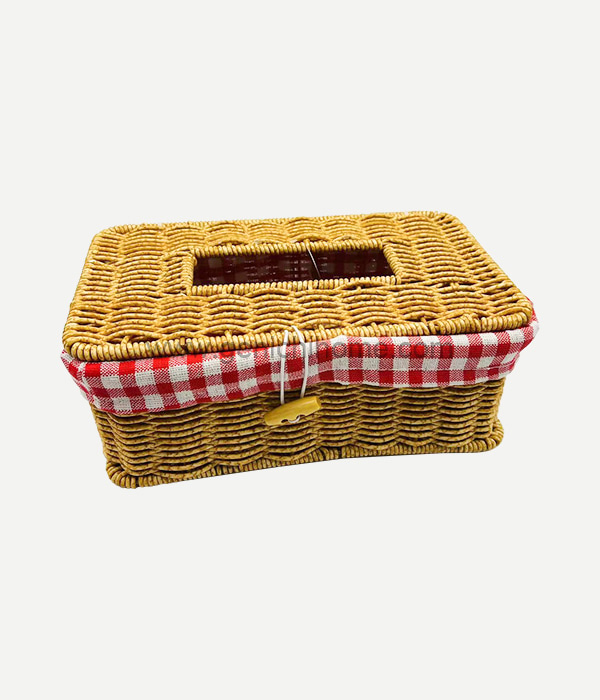Tissue boxes are everyday household and office items, but their placement can significantly impact convenience, hygiene, and décor. Whether used at home, in offices, or public spaces, knowing the best locations for tissue boxes ensures that they are both functional and aesthetically pleasing. This article explores where tissue boxes are suitable for placement, highlighting practical considerations and tips for different environments.
1. Living Room
The living room is a central gathering space in most homes, making it an ideal location for tissue boxes. Placing a tissue box on a coffee table, side table, or entertainment unit provides easy access for family members and guests. Considerations for living room placement include:
- Accessibility: Ensure the tissue box is within easy reach from sofas or chairs.
- Safety: Avoid placing boxes where they might fall or get knocked over, especially in households with children or pets.
- Aesthetics: Choose a tissue box design or cover that complements the room’s décor. Decorative tissue boxes can add a subtle style element to the living space.
2. Bedrooms
Bedrooms are private spaces where tissues are often needed for personal use, such as for allergies, colds, or makeup removal. Common placement areas include bedside tables, dressers, or nightstands. Key points include:
- Convenience: Place the tissue box where it can be easily reached while lying in bed.
- Hygiene: Avoid placing boxes near areas that might get dirty, such as floors or open windows.
- Design: Consider compact or stylish boxes that fit bedroom décor and do not clutter nightstands.
3. Bathrooms
Tissue boxes are increasingly used in bathrooms for convenience and hygiene. While toilet paper is the primary source for bathroom use, facial tissues are often needed for hand drying, makeup removal, or personal hygiene. Placement tips include:
- Countertops: A countertop near the sink is ideal for quick access.
- Wall-Mounted Holders: Space-saving wall-mounted tissue boxes prevent wet surfaces from damaging the box.
- Moisture Resistance: Choose tissue boxes or covers made from water-resistant materials to prevent damage in humid bathroom environments.
4. Kitchens
Kitchens are a high-traffic area where tissues can be useful for quick cleanups, wiping hands, or handling small spills. Suitable placement areas include:
- Countertops: Place tissue boxes on the counter but away from cooking surfaces to avoid grease and water splashes.
- Shelf or Cabinet Tops: Elevated placements reduce the risk of contamination while keeping tissues accessible.
- Near the Dining Area: If the kitchen also functions as a dining space, keeping a tissue box near the table is convenient.
5. Offices and Workspaces
In offices, tissue boxes are essential for personal use, maintaining hygiene, and accommodating employees’ needs. Placement considerations include:
- Desks: Personal tissue boxes on individual desks ensure accessibility and hygiene.
- Shared Areas: Place larger boxes in conference rooms, break rooms, and near printers or communal equipment.
- Visibility and Cleanliness: Keep tissue boxes in visible locations so that employees can easily locate them while ensuring the surrounding area remains clean.
6. Public Spaces
Tissue boxes are also important in public areas such as waiting rooms, hospitals, schools, and restaurants. Correct placement in these environments promotes hygiene and convenience:
- Reception Areas: Placing tissue boxes on counters ensures guests and clients can easily access them.
- Waiting Rooms: Tables or shelves in waiting areas help visitors reach tissues while seated.
- High-Traffic Zones: Consider multiple placements in hallways or common areas to ensure availability.
7. Vehicles
Tissue boxes are increasingly used in cars, buses, and other vehicles for convenience on the go. Placement tips include:
- Dashboard or Center Console: Keep the box within reach of the driver and passengers.
- Back Seat Holders: Small boxes can be mounted or stored in seatback organizers for rear passengers.
- Secure Placement: Ensure the box does not slide or interfere with driving safety.
Conclusion
Tissue boxes are versatile items that can be placed in nearly every room or environment where convenience and hygiene are important. Key factors for placement include accessibility, safety, cleanliness, and aesthetics.
- Living Room: Coffee tables or side tables for family and guest use.
- Bedroom: Nightstands or dressers for personal convenience.
- Bathroom: Countertops or wall-mounted holders with moisture-resistant covers.
- Kitchen: Counters, shelves, or near dining areas for quick access.
- Offices: Individual desks, break rooms, and shared areas for employees.
- Public Spaces: Reception areas, waiting rooms, and high-traffic zones.
- Vehicles: Dashboards, center consoles, or seatback organizers.
Proper placement enhances usability, maintains hygiene, and can even complement décor. By considering these factors, tissue boxes can serve their function efficiently in any setting, providing convenience for everyday life and professional environments alike.

